|

|
|
|
| |
|
|
|
| |
 | Some sports and pastimes are still as popular today as they were when our great-great-great-great-great-great-great-great grandparents were children! |
|
|
|
|
|
|
|
|
|
| |
 © Mark Henley/Panos Pictures
© Mark Henley/Panos Pictures |
|
|
|
|
|
|
|
|
|
| |
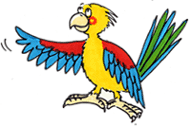 Every morning in China, millions of people of all ages practise t'ai chi. T'ai chi is probably linked to yoga, a type of exercise that has been practised in India for at least three thousand years. Every morning in China, millions of people of all ages practise t'ai chi. T'ai chi is probably linked to yoga, a type of exercise that has been practised in India for at least three thousand years.
Both t'ai chi and yoga use breathing and different body positions as a way of helping the mind and the body. Many people all over the world still practise t'ai chi or yoga to cope with the stresses of modern life. |
| |
|
|
|
|
|
|
|
|
| |
 | I like to have fun by dancing or skipping, like this girl in Morocco. All you need is a skipping rope! |
| |
|
|
|
|
|
|
|
|
|
| |
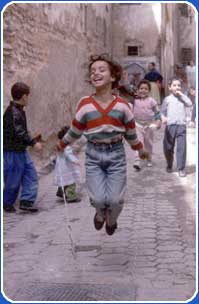 © Mark McEvoy/Panos Pictures
© Mark McEvoy/Panos Pictures |
|
|
|
|
|
|
|
|
| |
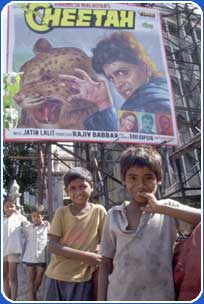 © Dermot Tatlow/Panos Pictures
© Dermot Tatlow/Panos Pictures |
|
|
|
|
|
|
|
|
|
| |
 Telling stories has always been a popular pastime. Today, we can go to the cinema to see some traditional stories that have been turned into movies, like here in Mumbai, India. How many can you think of? Telling stories has always been a popular pastime. Today, we can go to the cinema to see some traditional stories that have been turned into movies, like here in Mumbai, India. How many can you think of? |
| |
|
|
|
|
|
|
|
|
| |
 | Stories can be a great time for families and friends to get together and to have fun too. In St Lucia, a storyteller is known as a konte. The konte uses body movements and their voice to bring the story alive. Sometimes the konte involves the audience as well. |
| Click on the books that tell two short stories. In both of them a spider is the main character. One story comes from Jamaica and tells us about Anansi the spider. Anansi stories were first told in Ghana in West Africa, but they are now shared with people all over the world. The other story comes from the Cherokee Indians of North America. | 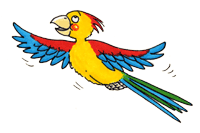 |
 | Either read the two stories yourself or someone in your class can be the storyteller, or konte! Afterwards, think about: |
- How are the two spider characters similar?
- How are the two spider characters different?
- What is the message behind each of the two stories?
- Which story did you enjoy the most?
- Which story would be the best to turn into a movie? Why? Click here to download a storyboard and draw the five key scenes from one of the stories that you would need to include in a movie.
- Do you know any more Anansi stories?
- Could you write your own?
|
 Thousands of years ago, the Ancient Greeks wrote and told imaginary stories known as myths. One Greek myth is about a girl called Arachne who turned into a spider. Thousands of years ago, the Ancient Greeks wrote and told imaginary stories known as myths. One Greek myth is about a girl called Arachne who turned into a spider.
You can read it at www.atlanticus.com/megansplace/otherwriters/cheryl/arachne.html Today, 'arachnophobia' is the word we use to describe a fear of spiders - can you see where the word came from? Jack suffers from arachnophobia - do you? |
 | As well as reading stories about Anansi the spider, a lot of children in Ghana play Oware, the oldest board game in the world. Oware is a game for two players. All you need is an oblong board with twelve hollowed-out holes, and 48 'seeds'. It is very easy to learn how to play Oware, but it is more difficult to win! |
|
|
|
|
|
|
|
|
|
| |
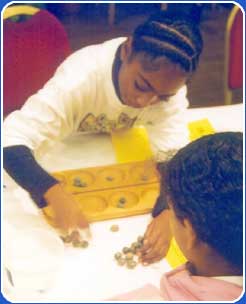 One of the competitors from Wyvil Primary School said, "the best part about playing Oware is thinking what the other person is going to do"
© www.lcd.org.uk
One of the competitors from Wyvil Primary School said, "the best part about playing Oware is thinking what the other person is going to do"
© www.lcd.org.uk |
|
|
|
|
|
|
|
|
|
| |
 In November 2003, sixty children took part in the Oware Championships at London Zoo, organised by a charity called Link Community Development. Participants had a lot of fun, and the Championships also raised money to support Link Community Development's work in Ghana, Uganda and South Africa. In November 2003, sixty children took part in the Oware Championships at London Zoo, organised by a charity called Link Community Development. Participants had a lot of fun, and the Championships also raised money to support Link Community Development's work in Ghana, Uganda and South Africa. |
| |
|
|
|
|
|
|
|
|
| |
 | You could have a go at playing Oware too! Ask your teacher to visit the teachers' notes page to find out how you can play the game, and how you can make your own Oware board! |
| |
|
|
|
|
|
|
|
|
|
 |
|
 |
|
|

